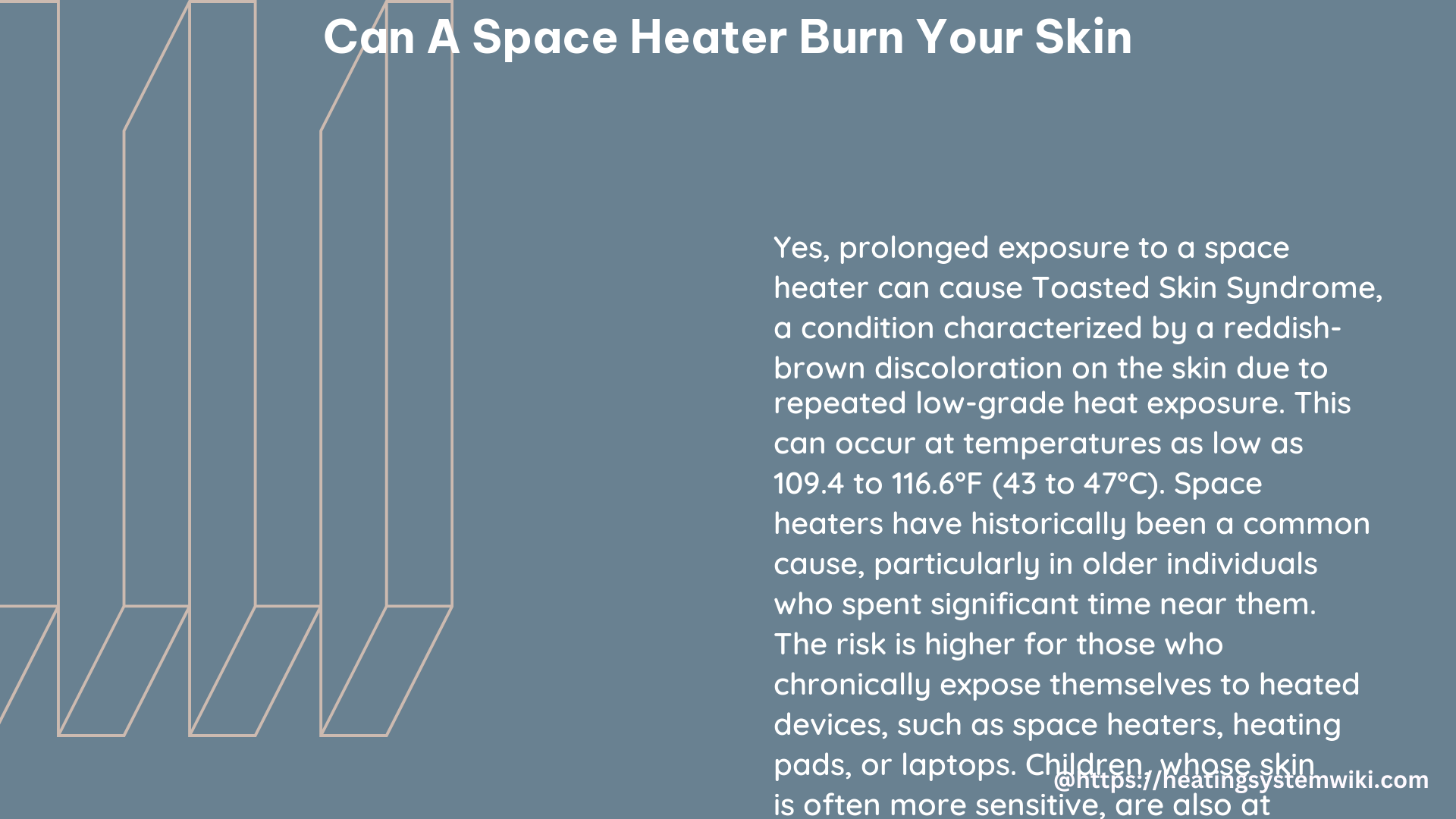Space heaters are a popular and convenient way to provide supplemental heating in homes and offices, but they can also pose a risk of skin burns if not used properly. In this comprehensive guide, we’ll explore the technical specifications, potential risks, and essential safety tips to ensure you can use a space heater without compromising your skin’s health.
Understanding Toasted Skin Syndrome
The more common risk associated with space heaters is the development of a condition known as toasted skin syndrome, or erythema ab igne. This condition is caused by prolonged exposure to low-grade heat, typically between 109.4°F (43°C) and 116.6°F (47°C), from a heat source like a space heater.
The repeated exposure to this low-grade heat can cause changes in the skin’s elastic fibers and microscopic blood vessels, leading to a red, circular area of discoloration on the skin. This discoloration is often described as a “reticular” or “net-like” pattern, resembling a “toasted” appearance.
While toasted skin syndrome is usually not a serious condition, prolonged exposure can increase the risk of skin changes that may develop into other conditions, including precancerous lesions and even skin cancer. It is essential to take precautions when using space heaters and other heat sources to prevent toasted skin syndrome and potential skin burns.
Technical Specifications for Safe Space Heater Use

To ensure the safe use of space heaters and minimize the risk of skin burns, it’s crucial to understand the technical specifications and guidelines:
-
Safe Distance: Space heaters should be used at a safe distance, typically a few feet away from the skin, to prevent direct heat exposure and potential burns.
-
Temperature Range: Most space heaters have a maximum temperature range of 109.4°F (43°C) to 116.6°F (47°C), which can cause toasted skin syndrome with prolonged exposure.
-
Preventing Toasted Skin Syndrome: To prevent toasted skin syndrome, it is recommended to avoid prolonged exposure to space heaters and to use them at the lowest heat setting possible.
-
Safety Features: Space heaters should be equipped with safety features such as automatic shut-off timers and tip-over protection to prevent accidents and potential burns.
DIY Tips for Safe Space Heater Use
In addition to the technical specifications, there are several DIY tips to ensure the safe use of space heaters and prevent skin burns:
-
Stable Placement: Place space heaters on a stable, level surface to prevent tip-overs and potential burns.
-
Safe Clearance: Keep space heaters at least 2 feet away from flammable materials such as curtains, furniture, and bedding.
-
Thermostat Control: Use a space heater with a thermostat to maintain a consistent temperature and prevent overheating.
-
Unattended Use: Do not leave space heaters unattended or running overnight.
-
Regular Inspection: Regularly inspect space heaters for signs of wear and tear, and replace them if necessary.
By following these technical specifications and DIY tips, you can safely use a space heater without the risk of skin burns or the development of toasted skin syndrome.
Conclusion
Space heaters can be a convenient and efficient way to provide supplemental heating, but it’s essential to use them with caution to prevent skin burns and other potential health risks. By understanding the technical specifications, potential risks, and essential safety tips, you can enjoy the benefits of a space heater while prioritizing your skin’s health and safety.
Remember, if you experience any persistent skin discoloration or changes after using a space heater, it’s important to consult with a healthcare professional for proper evaluation and treatment.
